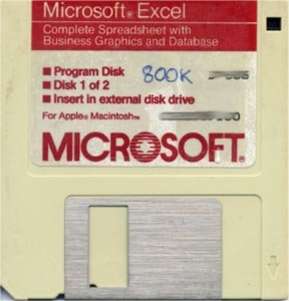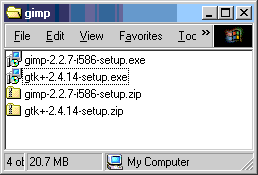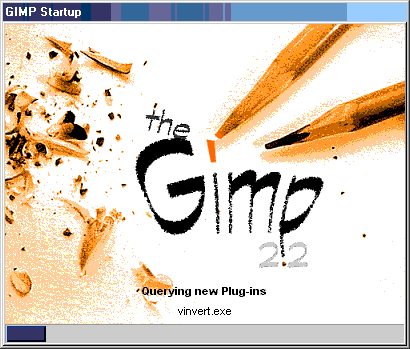Map the Web
May 24th, 2005
The Wikipedia article on the Internet is adorned with some striking images generated from a database of Class C networks connected to the Internet. Fractal? Scale similarity?

The Wikipedia article on the Internet is adorned with some striking images generated from a database of Class C networks connected to the Internet. Fractal? Scale similarity?

What would you do if you saw smoke emerging from a telephone box and then witnessed Joseph Chamberlain emerging, blinking, into the 20th century (about to enter Chamberlain Square)?
The Fierce performance art event is on in Birmingham again, and the Web site is open for public blogging. Simple sign-up, option of mailing list membership, and a public blog.

Yup – a student had the ‘Disc in Drive A is not formatted. Format now?’ message on a College computer. The disc had a term’s work on it, and, no there were not backups on the hard drive at home. IT coaches in the Open Access room did their magic with disc recovery software. The handout above is designed to reduce the hassle this kind of thing causes.
Roll on XP and USB drives for everyone.
“Alternatives to the ‘monolithic’ VLE, including public domain and open source VLEs, are emerging strongly. Some, such as ‘blogs’ and ‘wikis’, are completely different avenues to electronic publishing and collaboration and can be relatively inexpensive. Although UK universities seem to be surprisingly reluctant to spend less rather than more money on technology solutions, one can envisage a point where universities can ‘afford’ to dramatically reduce the space and budget allocated to on-campus computer laboratories, for example.”....The long-term intellectual and practical viability of designed and indexed ‘learning objects’ in higher education and within VLEs has yet to be proven, despite the massive effort and energy of some very high calibre academics and support staff. The culture of higher education remains amenable to assemblies of learning assets that are much more informal in nature and akin to ‘bricolage’.
Clive Holtham and Nigel Courtney quoted by Seb Schmoller in his recent mailing
Bricolage (noun) Something made or put together using whatever materials happen to be available.
L?©vi-Strauss The Savage Mind was the book that brought the French word bricolage into the English language. Several passages in the book explain the activities of a French village handyman.
Seb Schmoller is quoting 10 bullet points from a report by Professor Clive Holtham and Dr Nigel Courtney called Virtual Learning Environments: Practitioner Perspectives on Good Practice on this fortnight’s mailing page. The VLE has always been seen as a 100% solution by some managers (not all). Open Source VLEs such as Moodle allow smaller teams in institutions to ‘assemble’ technological support for students – along with blogs and wikis. I am myself using a blog page as a ‘jumping off’ page for students logging into a Moodle supported course.
The report is HE based – FE Colleges, in my opinion, can benefit from putting what resources they have into a small number of key systems and supporting those systems properly. We shall see how things pan out…
Thanks to Jeremy for this Web site…
Seems to have a good range of patterns including polar and log-lin. The metric rulings are on the right, and seem short of smaller divisions (i.e. 20mm/2mm isn’t there). The isometric papers could come in handy for 3-d drawing!

The GIMP Open Source image editing program is available for Mac OS X, Linux and Windows. Gimp 2 releases are fully ‘supported’ (in the sense that bugs are tracked by the Gimp project team members for Windows 2000 and XP, earlier versions of the OS are not supported but the package will work. The Windows version of the Gimp is supplied as two installers – the first installs the GTK+ libraries and the second installs the Gimp itself. Other applications can then use the GTK+ libraries, used to render images on the screen.
To get the Gimp working on an ancient Compaq Armada 7400 laptop with 128Mb of RAM and running Windows ME, you just have to download an earlier version of the GTK+ libraries, and alter one setting on the GIMP installer.
The files above are ZIP files that contain a ‘set-up’ file. Unzip the setup files and…


My old laptop is having a second lease of life running OpenOffice 1.1.4, the Gimp, Firefox and Thunderbird as the application software. I might try putting Ubuntu on the Compaq Armada 7400 as the main operating system – but I need to know that Ubuntu will recognise the modem first!
PS - the screen grabs in this post were all converted using the Gimp. They were converted to index mode using the Web palette but without dithering, so the title bars on the windows look funny as Windows ME insists on using a gradient fill in the title bar…. I hate dithering on screen grabs.
“The mistake made by the nurses was a mathematical miscalculation which in other working environments might not have been quite so catastrophic”
The quote is from the coroner in a case of a 15 day old baby given 10 times the prescribed dose of Digoxin to slow a fast heart rate and appears on the BBC News report of the case. The two nurses who gave the drug “told the hearing they checked and double-checked the drug levels before administering the injection to baby George”. One of the nurses continued [ my italics ]
“Because we had calculated it both separately and together and checked it to make sure it was accurate to the book, we believed that we were giving the right dose….. If we had any doubt whatsoever we would not have given the dose.”
Is this about mathematics or about knowing what the ‘rough ballpark’ dose is for drugs used at various stages of a baby’s development. Is it numeracy or contextual knowledge?
The full BBC News article also mentions comments about work loads on the ward at the time, and changes in procedures that will lead to more definite dosages being checked by pharmacists.